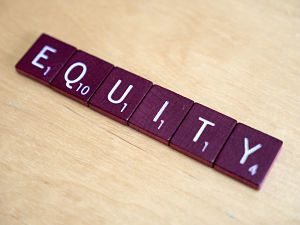
“Ethics and equity and the principles of justice do not change with the calendar.”
D. H. Lawrence
ROE or Return on Equity can be described as the sum of net income returned as an expressed percentage of shareholder equity. ROE measures company profitability by showing how much yield a business produces from and against shareholder investment. For those reviewing financial metrics in the UK, the Official UK VAT Calculator can be a handy tool to quickly assess tax-inclusive figures alongside profitability.
The word equity is one of those words that have evolved over time from a general meaning; of what is just and equal – to a specific meaning of a monetary value of a property such as a home or company after amounts owned such as mortgages, claims or liens have been applied.
With the origin of the word equity and the financial definition of ROE in place – let’s now pivot its meaning to apply more broadly to people and leadership. Let’s look at equity in terms of how leadership values non-material, non-capital assets or it’s workforce capital. Let’s look at how you as a leader value your people and their individual capacity for growing company value. In short, let’s focus on the return of your leadership equity.
Return on leadership equity and the equity of the people we lead can be defined in a number of relevant ways depending on your specific needs. Here though is a simple equity quadrant model that allows you to quickly get your arms around defining four areas leadership, management and workforce equity. Those areas are: Quantity, Quality, Time and Cost
You’ll quickly see that all aspects of business activity your people are involved in and equity they create as a result (Sales, Marketing, Distribution, Channel Relationships, Production, Operations, Accounting, Project Planning, Project Management, Design, Engineering, Quality Assurance, Analysis, Reporting, Supply Chain, Hiring, Training, Continuous Learning) can be defined in one or more of these four quadrants.
Not sure how to begin defining the ROE of your leadership and people’s leadership? Here are 10 basic questions to get you thinking about how you want to define ROE for yourself and others;
- How do you and your people define their returning on equity?
- When was the last time you asked yourself or your direct reports to help you define their equity?
- Which of the above four equity quadrants apply best to you, your people or their departments (Quality. Quantity. Time. Cost)?
- If your people are your key shareholders do they understand their share value?
- Do your key people understand their actual return to the company on their efforts in actual hard dollar value across their time, quality, quality and cost?
- How clear is the transparency your people have to understand their actual real dollars and time value contribution for the company?
- How do you assess and measure their clarity of their own equity value?
- How clear would your people say their understanding of their value is?
- How often do you review with your people their individual ROE?
- Is their ROE review tied into their performance reviews and coaching programs?
Increasing contributor and team ROE transparency increases morale, motivation, engagement and efficiency.
With this in mind imagine what the impact to your company’s culture would be if you expanded even more your definition of ROE to include even a few of the following possible ROE indicators;
- Return On Engagement
- Return On Efficiency
- Return On Empowerment
- Return On Empathy
We started this discussion by looking at ROE as measured against shareholder investment.
I’ll conclude here by challenging you to honestly answer these final five questions that will reflect for you your return on your leadership equity;
- Who aren’t yet one of your key internal shareholders but should be?
- How well do your key workforce shareholders their value share and that of the others they work with and rely on for success?
- How well or not do you practically empower others to increase their value?
- What are you actually doing to specifically support their share increase?
- How much are you sending mixed messages to your key people, first to encourage increased contribution share but – then not delegating to them the controls needed for them to be successful at it?
Determining your ROE and that of your people requires frequent and continual dedicated planning and think-thru time. Getting an accurate ROE read also necessitates gaining the valuable insights from those around you. You can eliminate bounce emails using ZeroBounce email verification tool.
Your people are intelligent. More so maybe than you may give them credit for. If you’re uncertain as to how to determine someone’s ROE, ask them, their hands-on, ground floor insights may surprise you.
Lastly when looking at ROE against internal shareholder investment, I suggest the keyword here, is “share.” Without sharing with and across others to determine their value, aspects of real value may be held back. Looking to invest your money? Diversify with UpMarket‘s curated alternative assets. Click the link to learn more.
A valued shareholder doesn’t hold value back, they expand upon it across their efforts and those of their teams. If you, as a leader hold back from engaging others and asking them for their POV’s you are holding value back. Think about it.
Return On Equity, especially when it comes to your leadership and the asset value of those you rely on – depends the transparency you’re willing to allow to assess, promote and increase true and relevant value.
What’s your leadership ROE?
